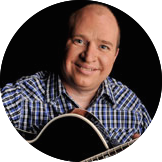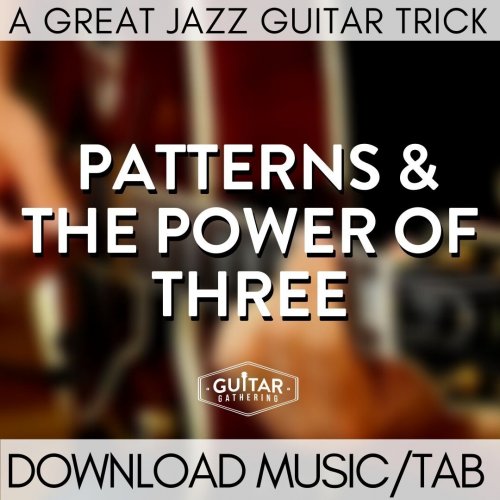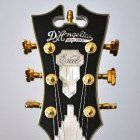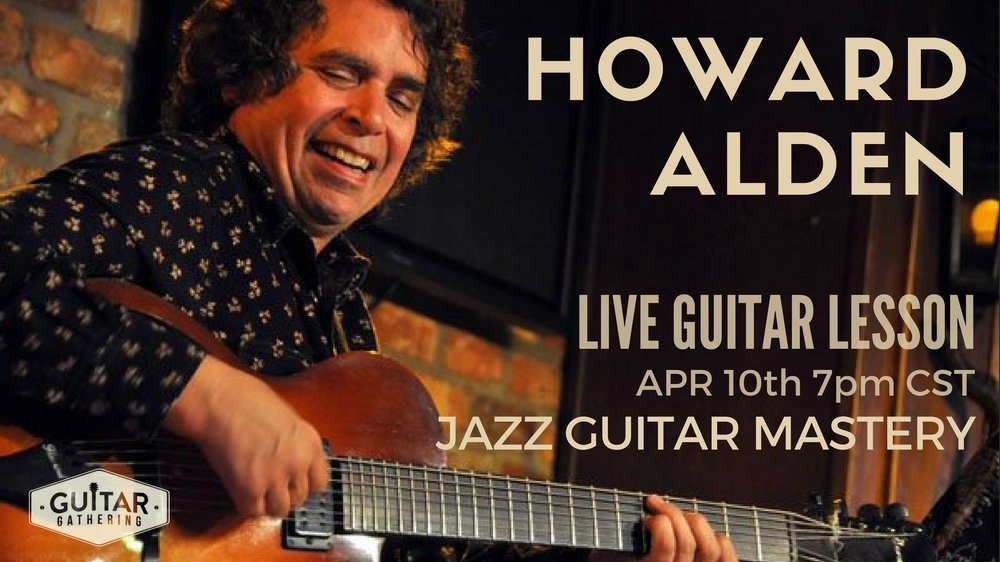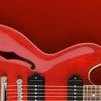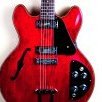Search the Community
Showing results for tags 'jazz guitar'.
-
Hello GG. This is actually my first post here! I just joined the forum a couple of days ago. Watching Steve Krenz's AMAZING videos on YouTube brought me here. And what brought me to his videos was buying his Learn & Master course. A little big about me: I write under the name Bro. Turtel. My real name isn't really all that important you can just call me Turtel if you'd like. I'm into all kinds of music but my love is for jazz and classical. But trust me I listen to everything. Anyways, I probably shouldn't get too off topic seeing as forums are usually pretty strict about that. This isn't about me, this is about the most expensive strings I've ever bought in my entire life. And this is the SECOND time I've bought them. My main driver for the last year has been an OM style Seagull guitar - a solid rosewood back and sides concert hall. I know a lot of people who play acoustic hate the sound of flatwounds on them, but I actually love the warmth. I typically play with Galli 80/20 acoustic jazz flats. Most people don't even know these strings exist. But take my word for it, they sound great on a flat top acoustic guitar. I've tried other flatwound strings on them including the set I'm about to mention. Yup, that's right. I spent $38 about half a year ago to try them on my guitar and they sounded trash. But I didn't give up. I ended up becoming so familiar and happy with the Galli 80/20's that they're my regular. The new guitar I got a couple of weeks ago (Loar LH-650) is an archtop. MUCH different sound. But it's such a lovely guitar. I got it B-Stock from The Loar on reverb and I won't tell you how much I paid for it but it was nowhere near even $1000. I took a chance despite the horrible reviews this company gets for its guitars. I just wanted to try an archtop (that could play both acoustic and electric) and I couldn't be more happy with my purchase. It has the EXACT sound I was looking for. And I know that's weird being a singer-songwriter because the percussive, minimalist sound of an archtop doesn't accompany solo singer-songwriter style very well in a lot of cases. But I knew what I was looking for. It took me an entire day to get the intonation correct, but I'm so glad I did, and I'm glad I figured out how to do because I love doing maintenance on my guitars. It's lovely and very relaxing, tbh. Okay, so I got these strings to try on my Loar after trying SO many different kinds of strings. I tried the La Bella jazz flats, Top Tapes, Chromes. Man I wasted like 80 dollars in strings in the first week I had the dang thing. It has a pickup on it, so I wanted a certain sound, but I didn't wanna use the Galli's because they're bronze. Sad to say, but this isn't even the most i've spent on strings all at once. Every time I get a new guitar I try many different strings just to see what kind of sound I can get from my guitar. I try strings until I find ones that fit the guitar well. I settled with the Martin Retro Monel strings for about the last week. Which were nice. They are still to this day some of my favorite strings. But anyone who plays flatwounds will tell you that once you go back to roundwounds you will hear the finger noise. It wasn't there for so long and no IT JUST WON'T STOP. So I decided to order strings I had tried before on my flat top. The reason is because I realized that although I wanted flat wounds on my flat top when I tried them, it wasn't fair of me to match these particular strings to that guitar. And that's fair. But I'm glad I tried them then because I wouldn't have thought to try them now. You know what strings I'm talking about, don't you? The TI George Bensons! I got the 14-55's and they are OFF THE CHAIN on this Loar. This is the best sound I've ever felt beneath my fingertips. Almost $40 but every bit was worth it. I know this isn't a jazz forum but a guitar forum in general. I was just wondering has anyone else tried these strings. I want to tell you about my favorite parts but I want to hear yours too. Obviously, the price isn't my favorite part. But from what I hear they last quite a while. Which I can believe. I hardly ever have to change the flat wounds on my Seagull. Because they last SO long. So the $40 I'd spend on 4 packs of Retros I'm spending on one pack of GB's to last just as long (give or take). We'll see though. What I do really love about these strings is the warmth. Now, this guitar is maple guitar and of course doesn't ever sound very warm. I'm not expecting it to have a lot of warmth but with these strings, it has just the right amount of warmth that I like. Especially having just come from the monel strings (which are pretty warm) these strings sound a bit less warm, but also more dark (because they are flat wounds). I'm not very good at explaining sound. I reckon no one is as good at explaining sound as it's just something you have to hear. Another thing I really like about these is that they have a PERFECT amount of tension. They're 14's but they bend so nicely. Not that in jazz there's a lot of bends, but I have a background of many other styles. So I do bend sometimes out of habit and out of trying to take it to the note I want. Also, these strings FEEL really great. Right out of the pack, they weren't sticky at first like I feel many other flat wound strings are. My hands were sliding immediately. $40 is a lot for a single pack of strings. If I find any problems or anything I will be back to talk about that. But I wanted to share my current experience. I can't wait to see how they sound with a pickup. What kind of strings do you like? Flatwound or roundwound? What size is your favorite? What are your favorite materials? What kind of sound do you want your strings to give your guitar? I wanna hear all about what kind of strings you guys are into. To Steve and the rest of the staff, thank you SO much for having this forum. I've honestly never been a part of a forum before. This is legitimately my first ever forum post (and i'm 25 years old). Thank you guys for the lessons, the awesome interviews with musicians, and giving people a place to talk about music and share our joy and experience with other guitar players. - BT
- 5 replies
-
- 2
-

-
- strings
- george benson
-
(and 4 more)
Tagged with:
-
Version 1.0.0
1,048 downloads
Topic: A Great Jazz Guitar Trick: Patterns and the Power of 3! Ready to learn a great jazz guitar trick? The ear recognizes patterns - patterns in chords, patterns in notes. You can use patterns to create incredible sounding progressions just by moving identical chord shapes to different parts of the neck - particularly three frets apart. Here's a great lesson on a wonderful concept of patterns and their use in threes. I know it sounds odd but, trust me, it's a handy tool to use. With some incredible musical results from just a bit of guitar sleight of hand. Here's a simple PDF of some of the concepts we'll be covering... Patterns and Power of 3.pdf Watch on our Guitar Gathering YouTube Channel HERE - Steve -
The following free resource material comes from Richie Zellon’s YouTube channel and his personal website. I think it will clear up any misconceptions one might still have about jazz improvisation. Even if you are not into jazz and improvisation, you may still find the information interesting and enlightening. Overview Of Special Considerations… I. We must have a proper understanding of all the chord-scale relationships within the harmonic progression we wish to improvise over. In brief, this means we must understand the function of each note in a scale in relationship to its offspring chords as well as the overall tonality at hand (e.g. major, minor, modal, etc). Remember all notes fit into one of 2 categories: harmonic tones and non-harmonic tones. To summarize: A. Harmonic Tones include all chord tones and upper extensions diatonic to the scale of the moment. B. Non-Harmonic Tones include any “avoid notes” diatonic to the scale of the moment and all non-diatonic chromatic notes. II. When we improvise a melodic line we are dealing with both a vertical and horizontal relationship to the current harmonic progression. The development of a good sounding phrase fully depends on an understanding of how these 2 aspects within your line interact with the moving chords. VERTICAL: When improvising over a given chord we should be primarily focused on outlining the most important harmonic tones of its mother scale. Thus our melodic line for most of the time takes on the shape of a gradually ascending and descending vertical structure also known as melodic contour. A good example of a vertical structure would be a 7th chord arpeggio. HORIZONTAL: A good example of horizontal movement takes place whenever we play a scale or any succession of notes in step-wise motion. Therefore, unless we are playing lines consisting exclusively of 3rds or larger intervals, there is an ongoing balance of horizontal and vertical movement in our melodies. However note that at the point of transition from one chord to another , our primary focus usually shifts from vertical to horizontal as we must connect both structures in a seamless linear fashion. This is what is referred to as voice leading and is best accomplished by resolving to the closest guide tone (ie. 3rd or 7th) of the new chord. Consequently the smoothest transitions employ step-wise motion. The following videos constitute a four-part tutorial on how to use “The Jazz Guitarists Signature Series” to expand your improvisational vocabulary. You will undoubtedly see that improvisation goes beyond the simple memorization of licks and the plug-and-play idea. There is even an element of spontaneity in it, but for the most part, it comes from what you learn in the practice room. If you had the patience and tenacity to come this far in this post, I’ll throw at you one more video as an example of phrases (licks) deconstruction and usage. All this material is available for free, and I’m sure it will complement any improvisation study materials you may already have, like the ones recommended by Steve. If however, you find your materials insufficient in some areas, Richie has an excellent, college level, two-volume series on improvisation.
-
Tuesday April 10th, 2018 Topic: Jazz Guitar Mastery with Howard Alden! 7pm Central Time US You can watch the lesson HERE. Tremendously excited to announce the great New York Jazz guitarist, Howard Alden will be joining us for this live lesson! Howard is one of the best jazz guitarists on the scene today. One of DownBeat Magazine's "Top 75 Guitarists", Howard is one of the most respected jazz guitarists in the world. Here are a few clips... Great Music, laughs, giveaways and more! Watch on our Guitar Gathering YouTube Channel HERE - Steve
- 7 replies
-
- 3
-

-
- live lesson
- howard alden
-
(and 1 more)
Tagged with:
-
“An Evening With Pat Martino” is a treat for any guitar student who is interested in tackling jazz guitar. I hope you will find it inspirational, educational and motivational. The preceding player’s profile comes from the “20th Century JAZZ GUITAR” free e-book by Richie Zellon, and serves as a brief historical background regarding the artist. “Pat Martino BEBOP, HARD BOP, POST-BOP Born Pat Azzara in South Philadelphia, Martino began playing professionally in 1961 at age 15. Throughout his early career he worked as a sideman with saxophonists Willis Jackson and Eric Kloss, as well as various organists including Jack McDuff, Jimmy Smith, Don Patterson and Richard “Grooves” Holmes. Martino made his recording debut as leader in 1967 with the album “El Hombre” on Prestige Records. In 1980 Martino suffered a nearly fatal brain aneurysm which resulted in the loss of his memory and playing abilities. With the help and encouragement of family and friends in conjunction with his old recordings, he was able to regain his cognitive abilities and eventually made a full recovery. He resumed his recording career in 1987 with the recording “The Return” and has kept a busy performing schedule ever since.”
-
“An Evening With Joe Pass” is a treat for any guitar student who is interested in tackling jazz guitar. I hope you will find it inspirational, educational and motivational. The preceding player’s profile comes from the “20th Century JAZZ GUITAR” free e-book by Richie Zellon, and serves as a brief historical background regarding the artist. “Joe Pass BEBOP, HARD BOP Joe Pass (Joseph Anthony Passalaqua) was born on January 13, 1929 in New Brunswick, New Jersey and raised in Johnstown, Pennsylvania. His father, an Italian steel-worker bought him his first guitar at age 9 and encouraged him to learn songs and improvise by ear after witnessing the youngster’s early musical tendencies. By the time he was 14, Pass was already working with local bands and later went on the road at 18 with the Tony Pastor band. After serving in the military he spent a period in New York during which he started using drugs and eventually ended up spending time in several rehabilitation centers as well as jail. As a result of his drug addiction, Pass spent most of the 50’s in obscurity. After over 10 years trying to kick drugs, Pass entered the Synanon Center in California where he made his famous Sounds of Synanon (1961) recording with other residents who were also jazz musicians. Upon leaving Synanon, Pass gradually became one of the most in demand guitarists in the Los Angeles studio scene where he worked for 10 years. During this period he worked as a sideman with Louis Bellson, Frank Sinatra, Sarah Vaughan, Joe Williams, Della Reese, Johnny Mathis, as well as on numerous TV shows including The Tonight Show starring Johnny Carson, The Merv Griffin Show, The Steve Allen Show, and others. After recording several albums for the Pacific Jazz and World Pacific labels throughout the 60’s, Pass was signed by Norman Granz, the producer of Jazz at the Philharmonic and founder of Verve Records to his new Pablo Records label in 1970. In 1974, Pass released his now classic solo album Virtuoso. This initial recording along with the entire series that followed, has redefined the art of solo jazz guitar. As a result of these solo recordings and concerts, Pass finally achieved the notoriety he deserved and was consistently listed in the jazz polls year after year. During this same period at Pablo, he recorded a set of widely acclaimed guitar/vocal duet records with Ella Fitzgerald. Joe Pass died from liver cancer in Los Angeles, California, at the age of 65.”


